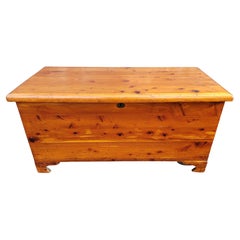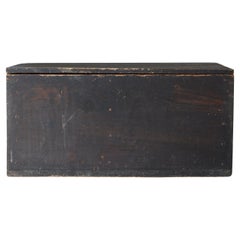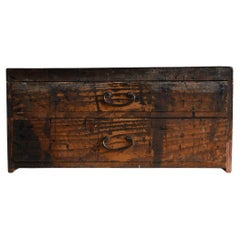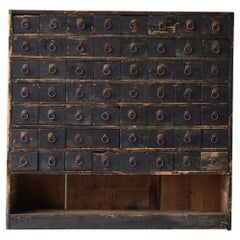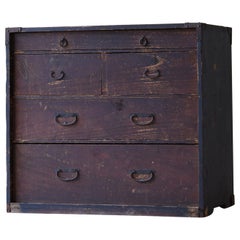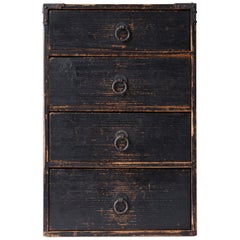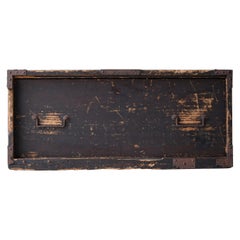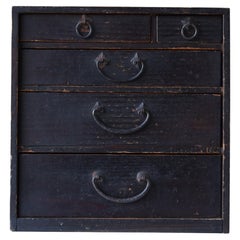Old Cedar Chest
Mid-20th Century American Mid-Century Modern Blanket Chests
Pine
Vintage 1940s Japanese Showa Commodes and Chests of Drawers
Cedar
Mid-20th Century Japanese Showa Commodes and Chests of Drawers
Cedar
Antique Early 19th Century Japanese Edo Commodes and Chests of Drawers
Cedar
Early 20th Century Japanese Meiji Commodes and Chests of Drawers
Cedar
Antique Late 19th Century Japanese Meiji Commodes and Chests of Drawers
Cedar
Antique Late 19th Century Japanese Meiji Commodes and Chests of Drawers
Cedar
Antique Late 19th Century Japanese Edo Commodes and Chests of Drawers
Cedar
Early 20th Century Japanese Meiji Commodes and Chests of Drawers
Cedar
Antique Late 19th Century Japanese Meiji Furniture
Cedar
Antique Late 19th Century Japanese Meiji Furniture
Cedar
Antique Late 19th Century Japanese Meiji Furniture
Cedar
Antique 19th Century Japanese Edo Furniture
Cedar
Antique 19th Century Japanese Meiji Furniture
Cedar
Antique Late 19th Century Japanese Meiji Furniture
Cedar
Early 20th Century Japanese Meiji Console Tables
Cedar
Old Cedar Chest For Sale on 1stDibs
How Much is an Old Cedar Chest?
Finding the Right Storage-case-pieces for You
Of all the vintage storage cabinets and antique case pieces that have become popular in modern interiors over the years, dressers, credenzas and cabinets have long been home staples, perfect for routine storage or protection of personal items.
In the mid-19th century, cabinetmakers would mimic styles originating in the Louis XIV, Louis XV and Louis XVI eras for their dressers, bookshelves and other structures, and, later, simpler, streamlined wood designs allowed these “case pieces” or “case goods” — any furnishing that is unupholstered and has some semblance of a storage component — to blend into the background of any interior.
Mid-century modern furniture enthusiasts will cite the tall modular wall units crafted in teak and other sought-after woods of the era by the likes of George Nelson, Poul Cadovius and Finn Juhl. For these highly customizable furnishings, designers of the day delivered an alternative to big, heavy bookcases by considering the use of space — and, in particular, walls — in new and innovative ways. Mid-century modern credenzas, which, long and low, evolved from tables that were built as early as the 14th century in Italy, typically have no legs or very short legs and have grown in popularity as an alluring storage option over time.
Although the name immediately invokes images of clothing, dressers were initially created in Europe for a much different purpose. This furnishing was initially a flat-surfaced, low-profile side table equipped with a few drawers — a common fixture used to dress and prepare meats in English kitchens throughout the Tudor period. The drawers served as perfect utensil storage. It wasn’t until the design made its way to North America that it became enlarged and equipped with enough space to hold clothing and cosmetics. The very history of case pieces is a testament to their versatility and well-earned place in any room.
In the spirit of positioning your case goods center stage, decluttering can now be design-minded.
A contemporary case piece with open shelving and painted wood details can prove functional as a storage unit as easily as it can a room divider. Alternatively, apothecary cabinets are charming case goods similar in size to early dressers or commodes but with uniquely sized shelving and (often numerous) drawers.
Whether you’re seeking a playful sideboard that features colored glass and metal details, an antique Italian hand-carved storage cabinet or a glass-door vitrine to store and show off your collectibles, there are options for you on 1stDibs.
- 1stDibs ExpertMarch 31, 2023To tell how old a cedar chest is, look for a stamp or label that indicates the maker's name. In some cases, you may find a date printed on the label. Otherwise, use trusted online resources to determine the years that the manufacturer operated and when it produced chests similar to yours. Alternatively, you can consult a certified appraiser or licensed antique dealer for assistance dating the piece. Find a collection of cedar chests on 1stDibs.
- 1stDibs ExpertOctober 12, 2021An old cedar chest’s worth is based on its age, condition or rarity -- starting at $99 and as high as $700 or more. If the hardware is original then it is worth more and can fetch about $200 to $400. Find a collection of old cedar chests on 1stDibs today.
- 1stDibs ExpertOctober 24, 2024To tell how old your Lane cedar chest is, look inside for its serial number. By reading it backward, you can determine the production date of your piece. For example, 869150 would be 05, 19, 68, or May 19, 1968. On 1stDibs, find a range of Lane chests from some of the world's top sellers.
- 1stDibs ExpertApril 5, 2022Whether or not Lane cedar chests are solid cedar depends on the furniture in question. Most chests produced by the manufacturer feature solid cedar wood interiors finished with five layers of walnut veneers. Legs and molding are usually some variety of solid hardwood but not always cedar. On 1stDibs, find a range of Lane cedar chests.
- What is a waterfall cedar chest?1 Answer1stDibs ExpertApril 5, 2022The term Waterfall Cedar Chest refers to a specific shape of cedar chest where the lid extends down the side a bit as though it’s flowing off the top. It’s not like modern waterfall countertops where the top extends to the floor, instead it reaches a few inches down from the top. Shop a collection of cedar chests from some of the world’s top sellers on 1stDibs.
- How do you date a cedar chest?1 Answer1stDibs ExpertMarch 25, 2024To date a cedar chest, search the piece for a manufacturer’s mark. Then, use trusted online resources to determine who the maker is based on those markings. From there, you can use photographs, serial numbers and other identifying characteristics to get a rough idea of when the maker produced it. Alternatively, you can have a certified appraiser or knowledgeable antiques dealer evaluate your cedar chest. On 1stDibs, explore a variety of cedar chests.
- Are cedar chests worth anything?1 Answer1stDibs ExpertNovember 26, 2024Yes, some cedar chests may be worth something. There is a market for many kinds of cedar chests, particularly those made by well-known companies like Lane and Cavalier. Potential selling prices vary based on age, maker, style, condition and other factors. To learn more about the potential value of your cedar chest, consult a certified appraiser or experienced antique dealer. On 1stDibs, shop a collection of cedar chests.
- 1stDibs ExpertMarch 25, 2024Cavalier cedar chests were mostly made between 1923 and the 1940s. The company's history dates back to 1865, with the formation of the Tennessee Furniture Company in Chattanooga, Tennessee. Its name changed to the Cavalier Corporation the same year that the furniture maker unveiled its line of cedar chests. Shop a selection of Cavalier furniture on 1stDibs.
- 1stDibs ExpertAugust 15, 2024How much your Lane cedar chest is worth depends on its age, style, condition and other factors. According to online sales information, the average selling price of Lane cedar chests is $200 to $400, but some pieces may be worth more or less. When the first iteration of the Lane Furniture company began to produce its now-famous Lane cedar chests in the early 20th century, the family behind the brand was unsure of how successful they’d be, so they initially didn’t bother adding their name to them. After securing a government contract during World War I, the company prospered and applied mass-production methods to its cedar-chest manufacturing. In 1922, it rebranded as the Lane Company and implemented a national advertising campaign to market its products, which led to a huge demand for its cedar chests that continues to this day. A certified appraiser or knowledgeable antique dealer can assess your chest and give you an idea of how much your piece is worth. Find a wide range of Lane furniture on 1stDibs.
- 1stDibs ExpertApril 5, 2022No, the last Lane cedar chest produced was in 2001 and the plant was then permanently closed. The company hit its heights in World War II, using a great ad campaign and encouraging the purchase of cedar chests, known as Hope Chests. In 1987 a hostile corporate purchase occurred and the new owners filed for bankruptcy in 1992. Shop a collection of Lane chests from some of the world’s top sellers on 1stDibs.
- 1stDibs ExpertApril 5, 2022Yes, Lane Furniture does indeed make cedar chests. From 1912 to 1987, the American furniture company estimated it had sold around 12 million chests and that number continues to grow with today’s sales. Cedar chests are widely used to store clothing and linen because cedar wood is a natural repellent against moisture and moths. You can shop a collection of Lane cedar chests from some of the world’s top sellers on 1stDibs.
- How much is an old chest worth?1 Answer1stDibs ExpertSeptember 28, 2021Antique chests are a worthy addition to your storage cabinets. On 1stDibs, you can find a variety of antique storage cabinets of a variety of sizes and shapes. While the prices may vary depending on the factors like size, shape, make and material, an antique sea chest can cost up to $5,000 or more.
- 1stDibs ExpertOctober 30, 2024How much a 1965 Lane cedar chest is worth varies. Prices for a 1960s-era Lane cedar chest can differ depending on size, style, condition and other attributes, but you will likely pay between $200 and $400 (you may find an authentic Lane cedar chest for a bit less or a bit more depending on the aforementioned factors).
When the first iteration of the Lane Furniture company began to produce its now-famous Lane cedar chests in the early 20th century, the family behind the brand was unsure of how successful they’d be, so they initially didn’t bother adding their name to them. After securing a government contract during World War I, the company prospered and applied mass-production methods to its cedar-chest manufacturing. In 1922, it rebranded as the Lane Company and implemented a national advertising campaign to market its products, which led to a huge demand for its cedar chests that continues to this day.
Consider having a certified appraiser or experienced antique dealer evaluate your cedar chest to learn how much it may be worth. Explore a wide range of Lane furniture on 1stDibs.
